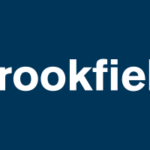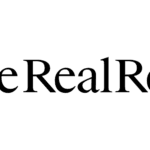CNO Financial Group, Inc. (CNO) Stock Analysis
CNO Financial Group, Inc. (CNO) Stock Analysis
As of February 14, 2025
1. Company Overview
CNO Financial Group, Inc. (NYSE: CNO) is a holding company for a group of insurance and financial services providers, primarily serving middle-income Americans and retirees. Headquartered in Carmel, Indiana, CNO offers life insurance, annuities, supplemental health products, and other financial solutions through its main subsidiaries, including Bankers Life, Colonial Penn, and Washington National. The company’s mission centers on providing security and retirement planning options to its customer base, emphasizing personal relationships and targeted distribution strategies.
Key Business Segments
1. Bankers Life
o Offers life insurance, annuities, and Medicare supplement products targeting retirees and pre-retirees.
o Operates through a career sales force and field offices nationwide.
2. Colonial Penn
o Markets life insurance directly to consumers, specializing in simplified-issue and guaranteed-acceptance products.
o Leverages national advertising and direct-response channels for customer acquisition.
3. Washington National
o Focuses on supplemental health and life insurance, including cancer, heart, and accident coverage.
o Works through independent agents and worksite marketing for payroll-deduction plans.
4. Other Services & Corporate
o Corporate oversight, capital management, and investment portfolio strategies.
o Advisory services and administrative functions supporting the insurance operations.
Strategic Initiatives
- Distribution Optimization: Strengthening the career-agent network and direct-response marketing to expand customer reach.
- Product Diversification: Evolving product mix with annuity and supplemental offerings tailored to changing retirement and healthcare needs.
- Technology Investments: Streamlining underwriting, policy servicing, and claims processes to improve efficiency and customer experience.
- Capital Deployment: Balancing share repurchases, dividends, and strategic acquisitions to enhance shareholder value and maintain financial flexibility.
2. Financial Performance
a. Revenue and Growth
- TTM Revenue (as of Dec 31, 2024): $4.45 Billion
- YoY Revenue Growth (TTM): ~7.30%
Analysis
CNO Financial reported total revenue of $4.45 billion, reflecting a year-over-year increase of about 7.30%. This moderate growth is attributable to stable premium inflows, improved net investment income amid rising interest rates, and continued expansion of supplemental and annuity product lines. The revenue rebound, although slower than in some prior periods, indicates resilience in the face of changing macroeconomic conditions.
b. Profitability
- Net Income (TTM): $404.00 Million
- EPS (TTM): $3.74
- Profit Margin (TTM): ~9.08%
- Return on Equity (ROE): 17.14%
- Return on Assets (ROA): 1.32%
Analysis
CNO achieved a net income of $404 million, translating to a profit margin near 9.08%. The return on equity of 17.14% signals effective use of shareholder capital, especially considering the capital-intensive nature of insurance operations. Meanwhile, ROA of 1.32% aligns with industry norms, given the large investment portfolio and policy reserve requirements typical in insurance.
c. Margins
- Gross Margin (TTM): ~41.08%
- Operating Margin (TTM): 17.37%
- Profit Margin (TTM): 9.08%
Analysis
Gross margin around 41% is consistent with the insurance sector’s business model, factoring in premium income, investment returns, and policy benefits. An operating margin of 17.37% highlights CNO’s ability to manage underwriting costs and administrative expenses effectively, while the 9.08% profit margin underscores overall profitability after accounting for policy benefits, commissions, and corporate overhead.
d. Cash Flow
- Operating Cash Flow (TTM): Data not fully available
- Free Cash Flow (TTM): Data not fully available
- FCF Per Share (TTM): Data not fully available
Analysis
While detailed TTM cash flow figures are not fully reported here, historical trends show CNO generally maintains positive operating cash flow, driven by consistent premium collections and stable policy obligations. The company also engages in share repurchases and dividends, reflecting a balanced approach to capital allocation.
3. Balance Sheet
- Total Assets: $37.85 Billion
- Total Liabilities: $35.35 Billion
- Shareholders’ Equity: $2.50 Billion
- Total Debt: $4.52 Billion
- Cash & Equivalents: $1.96 Billion
- Net Cash (Debt): -$2.86 Billion
- Debt-to-Equity Ratio: 1.81
- Current Ratio: 25.22
- Quick Ratio: 9.66
Analysis
With $1.96 billion in cash and $4.52 billion in debt, CNO’s net debt stands at approximately -$2.86 billion. A debt-to-equity ratio of 1.81 is relatively high, reflecting the leverage common in insurance operations (funding liabilities with investment assets). However, the company’s extensive investment portfolio and strong statutory capital help offset liquidity concerns. Extremely high current and quick ratios reflect the nature of insurance balance sheets, which include policy reserves and substantial investment holdings.
4. Valuation
- Current Stock Price (Feb 14, 2025): $41–$42 range
- Market Capitalization: $4.21 Billion
- PE Ratio (TTM): 11.07
- Forward PE: 10.86
- Price-to-Sales (PS) Ratio: 0.99
- Price-to-Book (PB) Ratio: 1.68
- PEG Ratio: n/a
Analysis
A trailing PE of ~11.07 and forward PE of ~10.86 suggest a moderate valuation relative to earnings. The price-to-sales ratio below 1.0 indicates that investors are paying less than one dollar per dollar of revenue, which can be attractive if CNO continues to improve profitability. The PB ratio of 1.68 sits near or slightly above many insurers, reflecting market optimism about the company’s ability to generate returns on equity. The PEG ratio is not provided but may be inferred from growth rates and earnings multiples if further data is available.
5. Market Performance
- 52-Week Range: $24.92 – $42.02
- 52-Week Price Change: +55.54%
- Beta (5Y): 1.06
Analysis
CNO’s stock has risen over 55% in the past year, reaching a high of $42.02. The 1.06 beta indicates volatility slightly above the broader market, reflecting the insurance sector’s sensitivity to interest rates and economic cycles. The strong price performance suggests investor confidence in CNO’s turnaround, capital deployment, and underwriting improvements.
6. Financial Health and Risks
a. Liquidity & Leverage
- Current Ratio: 25.22
- Quick Ratio: 9.66
- Debt / Equity: 1.81
While the extremely high current ratio is typical for insurers (owing to how assets and liabilities are classified), the company’s net debt of -$2.86 billion and a debt-to-equity ratio near 1.81 underscore the leveraged nature of insurance balance sheets. Maintaining adequate capital and statutory reserves is key.
b. Insurance-Specific Risks
- Policy Obligations: As with any life and health insurer, unexpected mortality/morbidity shifts or catastrophic events could affect claims.
- Investment Portfolio: Market volatility, credit risks, and interest rate changes can impact the value and yield of fixed-income securities.
- Regulatory Environment: CNO is subject to state insurance regulations, solvency requirements, and potential changes in tax or fiduciary rules.
c. Operational Efficiency & Growth
- Underwriting & Pricing: Achieving profitable underwriting while managing competition and cost pressures is vital.
- Distribution: Continued optimization of career agent and direct-response channels is crucial for top-line growth.
- Product Mix: Emphasizing annuities and supplemental lines can help navigate interest rate cycles and changing consumer needs.
d. Capital Allocation
- Share Repurchases: CNO has consistently reduced shares outstanding by ~6.09% yoy, signaling a commitment to returning capital to shareholders.
- Dividends: An annual dividend of $0.64 (1.55% yield) with ~6.67% yoy growth indicates stable capital returns, though coverage and future increases depend on sustained profitability and regulatory capital demands.
7. Conclusion
Pros
1. Steady Core Insurance Operations: Stable premium inflows and diversified product lines support consistent revenue and earnings.
2. Attractive Valuation Multiples: PE ratio near 11 and PS ratio below 1.0 may offer value relative to peers, assuming continued earnings stability.
3. Strong Shareholder Returns: Ongoing share repurchases and a growing dividend underscore management’s focus on shareholder value.
4. Improving Investment Income: Rising interest rates can bolster net investment yield, benefiting life insurers’ general account returns.
Cons
1. High Leverage: Debt-to-equity at 1.81, typical for insurers but raises sensitivity to interest rate changes and credit market conditions.
2. Interest Rate & Market Risks: Investment portfolio performance heavily influences earnings, subjecting CNO to market volatility.
3. Regulatory Complexity: Varying state regulations and capital adequacy requirements can limit strategic flexibility.
4. Slower Growth Outlook: While revenue is growing, it’s moderate compared to some financial services peers; expansion depends on product innovation and effective distribution.
Final Note
CNO Financial Group’s focus on middle-market insurance and annuities provides stable, if measured, growth potential. The company’s capital returns through buybacks and dividends highlight a shareholder-friendly posture, though ongoing leverage and regulatory demands require prudent balance sheet management. For investors seeking exposure to a mid-sized life and health insurer with a solid dividend track record, CNO may offer an appealing risk-reward profile—contingent on continued underwriting discipline, favorable interest rate trends, and effective product distribution.
Disclaimer: This analysis is for informational purposes only and does not constitute investment advice. Investing involves risks, including potential loss of principal. Past performance is not indicative of future results. Consult a qualified financial advisor before making any investment decisions.






